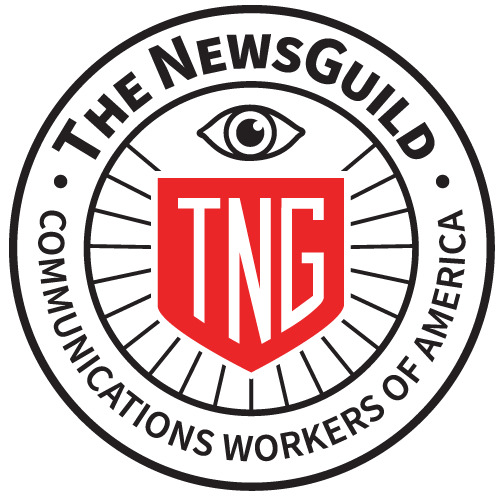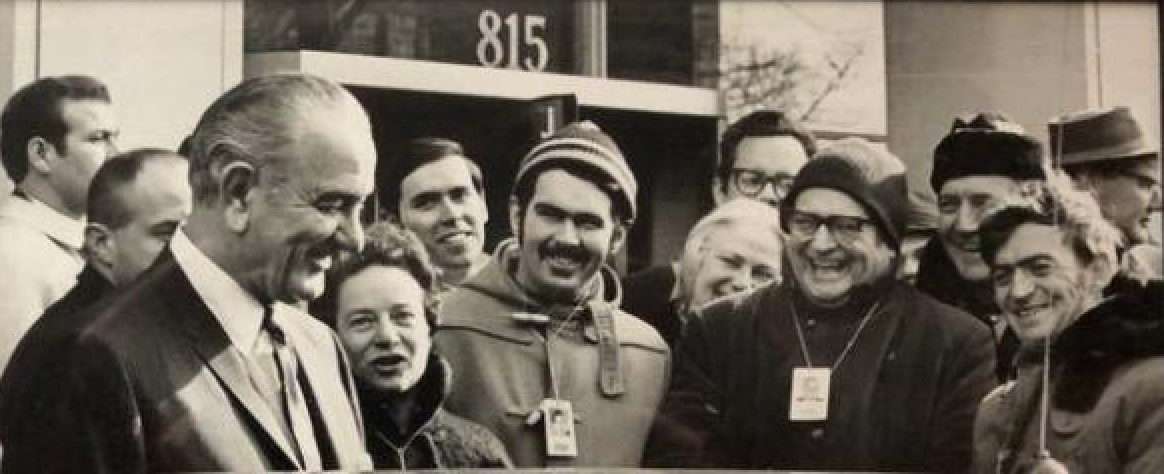Feb. 6, 2019 – Picketing outside a broom closet in a state Capitol building.
Earning extra money by working on the Los Angeles waterfront.
Threats of being arrested.
Becoming president of the Wire Service Guild, unaware a strike was brewing.
These are all memories shared by the people who walked the picket line in January 1969, when the Wire Service Guild – now the News Media Guild – held its only strike against The Associated Press.
On the 50th anniversary of the strike, they shared their memories in a newsletter called Connecting, which is compiled by Paul Stevens, a former bureau chief with the AP.
Adolphe Bernotas, a former WSG officer and member of a least a dozen bargaining teams, recalls how the publisher of the Concord [New Hampshire] Monitor threatened to have him arrested if he picketed the newspaper’s building. The AP offices were located in the offices of the Monitor, known as the state’s most liberal newspaper.
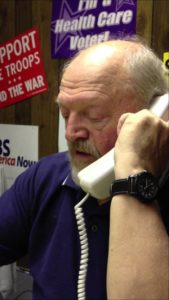
Meanwhile, the conservative Manchester Union Leader asked Bernotas to cover a few legislative hearings at union pay.
The strike resulted in several economic improvements, including a 37.5-hour week for night, overnight and Sunday shifts. “More importantly, the strike energized and mobilized a new generation of Guild leaders responsible for the union’s lawsuit that opened AP to women and minorities, which the company fought,” Bernotas wrote.
Malcolm Barr Sr. recalls he was encouraged to run for WSG president in order to wrest the office from New York and into Washington. The other candidate dropped out and Barr became president.
“No one bothered to tell me that a strike vote was imminent or maybe already taken,” Barr wrote. “However, I inherited a place at the negotiating table and leadership of the eight-day strike.”
Most of the strikers, including Barr, recall bitterly cold weather as they walked the picket line. The strike spread to all bureaus in all 50 states, Barr said.
“My numerical replacement in Hawaii, Buck Donham, called to tell me he was on the sidewalk, 6,000 miles away, in front of the News building in Honolulu, and that Honolulu Bulletin staffers were refusing to cross the picket line of just one Guild member!” Barr wrote.
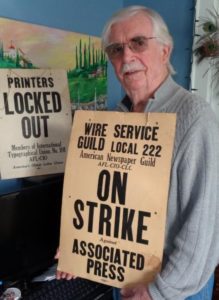
The strike began as Paul Albright was beginning coverage of the 1969 session of the North Dakota legislature in Bismarck. The AP’s office in the Capitol was located off the rotunda of the Senate chambers, “raising the potential for my picketing in the hallway just outside the entrance to the Senate.”
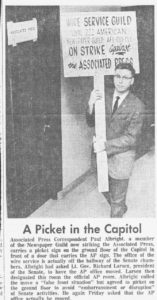
Since he didn’t want to alienate his new sources, he met with Lt. Gov. Richard Larsen, who moved the AP office temporarily moved to a room on the Capitol’s ground floor. While this change was covered by TV and newspaper reporters, no one reported that the office was a broom closet stocked with mops and buckets.
Albright revisited Bismarck in September 2017 and found his old office, which is still a broom closet.
Sometimes the strike continued with a knowing wink from managers. Martha Malan was a 22-year-old TTS operator who worked a shift that began at 2 a.m. in the Minneapolis bureau. Bureau chief George Moses would call nightly and advise her of new starting times.
“The idea, of course, was to get me into the building when there were no Guild pickets,” she wrote.
After each call, she contacted her union representative to advise of her new start time. “Thus, there were always pickets, no matter what time I arrived,” Malan wrote. “Though I’m sure George saw the ruse, we had an unspoken understanding: He was doing his job as bureau chief, and I was doing my duty as a union member.”
Lyle Price, who worked in Los Angeles, said two AP staffers told him that they made more during the strike by working on the waterfront than they would have at AP.
Price, who served two terms as WSG president, compared his work in the union with his three years in the Army in the 1950s.
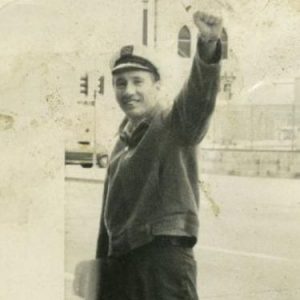
“There were various reasons cited for the strike, but basically I’d have to say that AP union members had faith that its negotiators and leaders had the best interests of the staff in mind and were competent,” Price wrote. “Such faith, I feel to this day, is a key to a successful union (and something every union leader should work to obtain).”
When he moved from being a unit chair to president and served in negotiations in 1972-73, “I learned firsthand how daunting that task could be and what a responsibility it is,” Price wrote.
Photo: During the strike, a group of AP picketers walked from the Washington bureau to the AFL-CIO office and chatted with LBJ. From left front; LBJ, AP reporter Frances Lewine; and AP photogs Chick Harrity, Bob Schutz, Harvey Georges and Bob Daugherty. (AP photog Henry Burroughs [wearing glasses obscured in center rear] is behind Schutz) Photo provided by Daugherty, who says picture probably shot by John Rous. Courtesy of NH Labor News.
